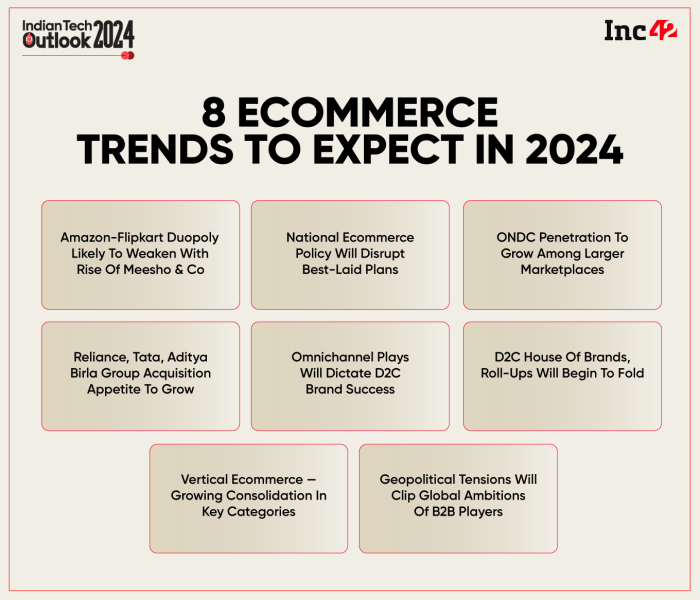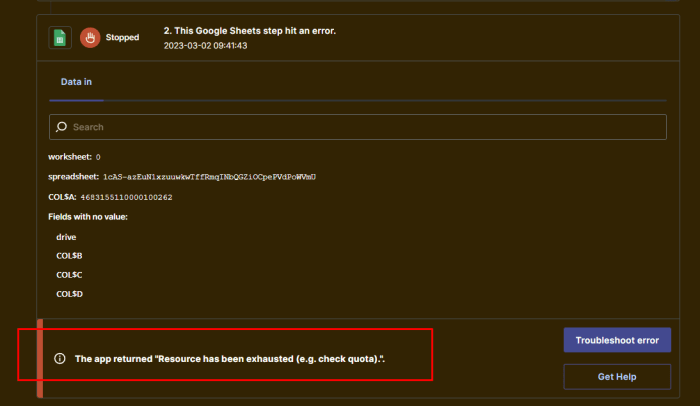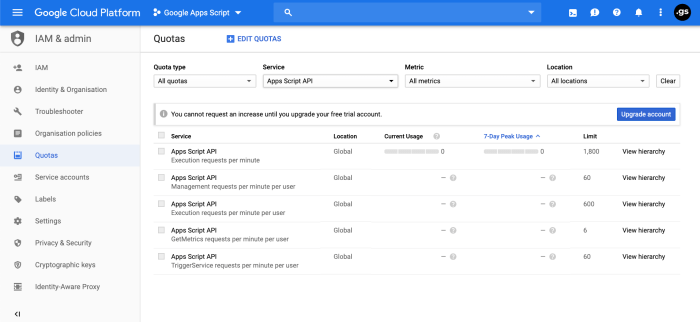The Rise of Social Commerce

Social commerce, the practice of buying and selling goods or services directly through social media platforms, is experiencing explosive growth. This trend is driven by the increasing time consumers spend on social media, the seamless integration of shopping features within these platforms, and the rise of influencer marketing. The lines between social media and e-commerce are blurring, creating new opportunities for businesses and changing the way consumers discover and purchase products.Social media platforms are increasingly becoming integrated e-commerce hubs.
Features like in-app shopping, shoppable posts, and live shopping streams are making it easier than ever for consumers to browse and buy products without leaving the platform. This streamlined shopping experience is a major driver of social commerce’s success. Companies are leveraging this by creating engaging content that directly links to their online stores, resulting in higher conversion rates.
Successful Social Commerce Strategies
Several strategies have proven highly effective in driving social commerce sales. For instance, incorporating interactive elements like polls and quizzes in posts can increase engagement and brand awareness, leading to more sales. Running targeted advertising campaigns on social media platforms allows businesses to reach specific demographics, increasing the efficiency of their marketing spend. Utilizing user-generated content, such as customer reviews and photos, builds trust and authenticity, encouraging others to purchase.
Finally, collaborating with relevant influencers can significantly boost brand visibility and drive sales.
The Impact of Influencer Marketing on Sales
Influencer marketing plays a crucial role in the success of social commerce. Consumers often trust the recommendations of influencers they follow, viewing them as authentic and relatable sources of information. By partnering with influencers, businesses can tap into their established audience and leverage their credibility to drive sales. A successful influencer marketing campaign typically involves selecting influencers whose audience aligns with the brand’s target market, providing them with relevant products or services, and tracking the results of the campaign.
This allows businesses to measure the return on investment and optimize their strategies accordingly. For example, a beauty brand partnering with a popular beauty influencer can see a significant increase in sales by featuring their products in the influencer’s posts and stories.
Social Media Platforms for E-commerce: A Comparison
The effectiveness of different social media platforms for e-commerce varies depending on the target audience and the nature of the product or service.
| Platform | Strengths | Weaknesses | Examples |
|---|---|---|---|
| Highly visual, strong influencer marketing potential, large user base, shoppable posts | Can be expensive for advertising, algorithm can limit organic reach | Fashion brands, beauty brands, lifestyle brands | |
| Large user base, detailed targeting options for advertising, strong community building capabilities | Less visually focused than Instagram, can feel less authentic than other platforms | E-commerce stores, retail businesses, local businesses | |
| TikTok | High engagement rates, viral potential, strong for younger audiences, live shopping features | Relatively new for e-commerce, algorithm can be unpredictable, less established for direct sales | Fast fashion brands, beauty brands, consumer electronics |
| Highly visual, strong for product discovery, users are actively searching for products | Lower engagement rates than other platforms, less focus on direct sales | Home décor brands, DIY brands, craft brands |
Personalization and AI-Powered Experiences

In 2024, the e-commerce landscape will be increasingly defined by personalized experiences driven by artificial intelligence. Consumers expect tailored interactions, and businesses that leverage AI effectively will gain a significant competitive advantage by enhancing customer satisfaction and driving sales. This personalization extends beyond simple recommendations; it encompasses the entire customer journey, from initial browsing to post-purchase engagement.AI is rapidly transforming how businesses understand and interact with their customers.
By analyzing vast amounts of data – including browsing history, purchase behavior, demographics, and even social media activity – AI algorithms can create highly personalized customer profiles. This allows for targeted product recommendations, customized offers, and relevant content delivery across multiple touchpoints. For example, an AI-driven recommendation engine might suggest a specific hiking boot to a customer based on their past purchases of outdoor gear, their location (indicating a mountainous region), and their engagement with related content on the company’s website or social media.
The effectiveness of these engines is demonstrably high; studies consistently show that personalized recommendations significantly increase conversion rates and average order values.
AI-Driven Recommendation Engines and Their Effectiveness
AI-powered recommendation engines utilize various techniques, including collaborative filtering (analyzing the behavior of similar customers), content-based filtering (recommending items similar to those previously liked), and hybrid approaches combining both methods. Amazon’s recommendation system, for instance, is a prime example of a highly effective hybrid approach, leveraging a vast dataset to provide highly relevant product suggestions. The success of such systems is measured by metrics like click-through rates (CTR), conversion rates, and average order value (AOV).
A well-implemented AI recommendation engine can substantially boost these metrics, resulting in increased sales and customer lifetime value. For example, a 10% increase in CTR due to improved recommendations can translate to a significant revenue increase for a large e-commerce platform.
A Personalized E-commerce Experience: User Flow Diagram
Imagine a user, Sarah, visiting an online clothing retailer. The user flow diagram would look like this: Step 1: Landing Page: Sarah lands on the homepage. Based on her past browsing history (e.g., viewing dresses and accessories), the website displays personalized banner ads featuring new arrivals in those categories. Step 2: Browsing: Sarah browses the dresses section. AI analyzes her interactions (hovering over specific styles, adding items to her wishlist) to further refine her profile and offer more tailored recommendations.
Step 3: Product Page: Sarah views a particular dress. The website displays related items (e.g., matching shoes, jewelry) and customer reviews from users with similar style preferences. Step 4: Checkout: During checkout, the website offers personalized discounts or free shipping based on her past purchases and cart value. Step 5: Post-Purchase: Sarah receives personalized email updates about her order status, styling tips related to the purchased dress, and recommendations for complementary items.This journey demonstrates how AI can create a seamless and highly personalized experience throughout the customer lifecycle.
Ethical Concerns Related to Personalized Advertising
While AI-powered personalization offers significant benefits, it also raises ethical concerns. The collection and use of vast amounts of personal data raise questions about privacy and data security. There is also the potential for algorithmic bias, where recommendation systems might inadvertently discriminate against certain groups of users. Furthermore, the constant bombardment of highly targeted ads can lead to feelings of being manipulated or surveilled, potentially impacting customer trust.
Transparency and user control over data collection and usage are crucial to mitigate these ethical concerns. Regulations like GDPR and CCPA aim to address these issues, but ongoing vigilance and responsible implementation of AI are essential for maintaining ethical standards in personalized e-commerce.
The Metaverse and Immersive Shopping
The metaverse presents a significant opportunity for e-commerce to transcend the limitations of traditional online shopping. By offering immersive, interactive experiences, brands can foster deeper engagement with customers and drive sales in entirely new ways. This shift towards virtual shopping environments promises a more engaging and personalized retail experience, blurring the lines between the physical and digital worlds.The potential of the metaverse for e-commerce lies in its ability to create highly personalized and engaging shopping experiences.
Imagine trying on clothes virtually, exploring a virtual store with realistic textures and lighting, or even attending a virtual fashion show from the comfort of your home. This level of immersion can significantly enhance customer satisfaction and brand loyalty. Moreover, the metaverse allows for the creation of unique and exclusive digital products, expanding the possibilities for revenue generation.
Brands Experimenting with Virtual Shopping
Several brands are already pioneering virtual shopping experiences within the metaverse. Nike, for example, has created Nikeland, a virtual world within Roblox where users can play games, customize avatars, and engage with Nike products in a playful, interactive environment. Luxury brands like Gucci have also ventured into the metaverse, offering exclusive digital goods and virtual events to their customers.
These early experiments demonstrate the growing interest in leveraging metaverse technologies to enhance the customer journey and create new revenue streams. These examples showcase the potential for creating engaging experiences and building brand communities in virtual spaces.
Technological Challenges of Immersive Shopping Environments
Creating truly immersive shopping environments presents significant technological challenges. High-quality graphics and realistic physics simulations are crucial for creating a believable and engaging experience. Furthermore, ensuring seamless integration across different devices and platforms is essential for widespread adoption. Developing intuitive and user-friendly interfaces for navigating virtual spaces is also a key challenge. The need for robust infrastructure to support large numbers of concurrent users and high-bandwidth requirements for data transmission also poses significant hurdles.
Overcoming these challenges requires ongoing innovation and collaboration across multiple industries.
Hypothetical Metaverse Shopping Experience
Imagine entering a virtual department store, your avatar perfectly mirroring your own style. As you walk through the virtual aisles, you can interact with product displays using haptic feedback, feeling the texture of fabrics or the weight of objects. High-fidelity visuals showcase products in realistic detail, allowing you to examine intricate designs and colors from every angle. The ambient sounds of a bustling store subtly enhance the immersive experience.
Personalized recommendations, based on your past purchases and browsing history, appear as holographic displays, guiding you towards items you might like. You can even consult a virtual stylist for personalized fashion advice. After making your selection, the digital items are instantly delivered to your virtual wardrobe, or a physical delivery is scheduled for tangible products. This seamless blend of physical and digital elements creates a truly unique and engaging shopping experience.



